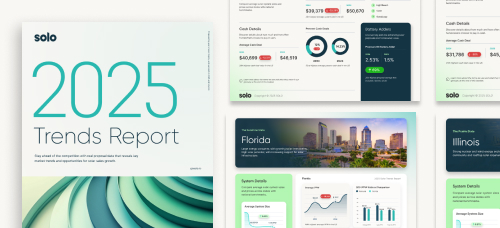As businesses continue to grow and evolve, effective hiring practices become increasingly vital. Building a dream team requires careful consideration and a strategic approach.
1. Crafting an Irresistible Job Description
Creating a compelling job description is the first step in attracting the ideal candidate. It’s crucial to emphasize transparent communication and convey your company’s identity and values. A well-crafted job description should ignite candidates’ passion for your organization even before they apply. Take the time to write a job description that speaks directly to your ideal candidate. Here are some tips to consider:
- Clearly define the role and responsibilities: Provide a detailed overview of the position, including the key responsibilities and requirements. This will help candidates understand if they are a good fit for the role.
- Highlight your company culture: Showcase your company’s values, mission, and culture. Candidates are more likely to be attracted to organizations that align with their values.
- Use clear and concise language: Avoid using jargon or complex terms that may confuse potential candidates. Use simple language to ensure clarity.
- Include information about benefits and perks: Highlight unique benefits or perks your company offers. This will help differentiate your job posting from others and attract top talent.

2. The Importance of Follow-Up and Communication
Maintaining timely communication throughout the hiring process is crucial to keep candidates engaged and ensure a positive candidate experience. The significance of follow-ups cannot be overstated, as they directly impact your company’s reputation. Here are some key considerations:
- Acknowledge receipt of applications: Send an automated response acknowledging that you have received the candidate’s application. This simple step shows that you value their time and effort.
- Provide regular updates: Keep candidates informed about the progress of their application. This helps to manage their expectations and demonstrates your commitment to open and transparent communication.
- Offer constructive feedback: If a candidate is not selected for the position, provide them with constructive feedback on why they were not chosen. This can help candidates improve their skills and show that you value their efforts.
3. Looking Beyond the “Culture Fit”
Traditionally, hiring for culture fit has been a common practice. However, there is a growing shift towards valuing diversity and different perspectives within the team. Embracing diversity can foster innovation and creativity within your organization. Here are some ways to ensure diversity in your hiring process:
- Cast a wider net: Expand your candidate pool by reaching out to diverse communities and organizations. This can include attending career fairs, partnering with diversity-focused job boards, or engaging with professional networks that promote diversity.
- Focus on skills and potential: Instead of solely looking for candidates who fit the existing culture, focus on their skills, experiences, and potential to contribute to the team. This can help bring fresh perspectives and ideas to your organization.
- Incorporate diversity training: Implement diversity training programs for your hiring managers and interview panels. This can help eliminate unconscious biases and ensure a fair and inclusive hiring process.
4. Trusting Your Gut and Identifying Passion
While qualifications and experience are important, sometimes a candidate’s passion and eagerness to learn can outweigh their qualifications on paper. Taking chances on passionate individuals can lead to exceptional hires. Here are some ways to identify passion during the hiring process:
- Look for genuine enthusiasm: Pay attention to the candidate’s level of excitement and engagement during the interview. Passionate candidates will demonstrate genuine enthusiasm for the role and the company.
- Assess their willingness to learn: Ask questions that assess a candidate’s willingness to learn and grow within the organization. Look for individuals who are eager to acquire new skills and take on challenges.
- Trust your instincts: Sometimes, your gut feeling can guide you towards the right candidate. If you have a strong positive intuition about a candidate, it may be worth taking a chance on them.
5. What to Avoid in the Hiring Process
When it comes to hiring, it’s important not to rush out of desperation. Cutting corners can lead to costly turnover and negatively impact your organization. Here are some things to avoid in the hiring process:
- Rushing the decision: Take the time to thoroughly evaluate candidates and consider their fit with the role and the organization. Making hasty decisions can result in hiring the wrong person.
- Neglecting reference checks: Reference checks provide valuable insights into a candidate’s past performance and work ethic. Failing to conduct thorough reference checks can lead to hiring the wrong person for the job.
- Ignoring red flags: Pay attention to any warning signs or red flags during the hiring process. This could include inconsistencies in the candidate’s resume, unprofessional behavior, or negative feedback from references.
6. Choosing the Right Job Posting Platforms
Selecting the right job posting platforms can significantly impact the quality and diversity of your candidate pool. Consider the nature of the role, your diversity initiatives, and the experience level you are targeting. Here are some factors to consider when choosing job posting platforms:
- Niche job boards: If you are looking for candidates with specific skills or experience, consider posting on niche job boards that cater to those industries or roles. This can help you target a more focused and relevant audience.
- Social media platforms: Utilize social media platforms like LinkedIn, Facebook, and Twitter to promote your job openings. These platforms have a wide reach and can help you connect with passive job seekers.
- Employee referrals: Encourage your employees to refer qualified candidates for open positions. Employee referrals often result in high-quality hires and can help promote a positive company culture.
By implementing these best practices, you can set your company on the path to recruiting top talent and achieving long-term success in the ever-evolving business landscape.
Conclusion
Mastering the art of hiring requires a strategic approach and a commitment to best practices. From crafting compelling job descriptions to embracing diversity and trusting your instincts, these strategies can help you build a team that drives your business forward. Remember, successful hiring is not just about qualifications; it’s about passion, diversity, and communication. By following these guidelines, you can attract and retain top talent, ensuring the success of your organization for years to come.


